  | Mammals All Materials © Cmassengale |   |
Main Characteristics of mammals:
- Endothermy – maintain high, constant body temperature through their metabolism
- Pelage – hair or fur made of protein called keratin covering all or part of the body for insulation & camouflage
- Four chambered heart ( two atria & two ventricles) keep oxygenated & deoxygenated blood from mixing; double circulation

Mammal Heart
- Mammary glands in females are modified sweat glands that make milk containing sugars, proteins, & fats to nourish young
- Single jawbone
- Specialized teeth for biting, cutting, & chewing
- Highly developed brain (large cerebrum)

- Diaphragm – muscle below lungs that aids respiration
- Most are viviparous (live birth)
- Uterus in females where young develop
- Placenta lines uterus & provides nutrients and gas & waste exchange for developing young
- Have sweat glands for cooling & scent glands for attracting mates & marking territories
Mammal Ancestors:
- Fossil records show mammals arose from group of reptiles called therapsids at the end of the Paleozoic era
- Therapsids were endotherms with specialized teeth like mammals
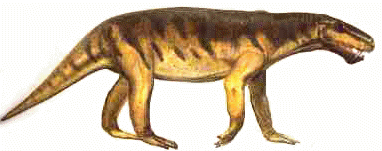
Therapsid
- First mammalian fossil found in Mesozoic era (hair, single jawbone, specialized teeth, & endothermic)
- Early mammals were small, shrew like, insect eaters that had large eye sockets making them probably nocturnal
- When dinosaurs became extinct, new habitats & food supplies opened up for mammals
- “Age of mammals” occurred during Cenozoic era
- Oviparous (egg laying) monotremes evolved first
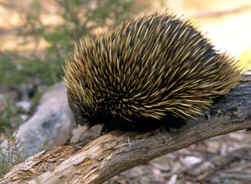 |  |
| Echidna | Platypus |
| Monotremes | |
- Viviparous (live birth) marsupials with incomplete uterine development appeared next & then placental mammals
 |  |
| Tasmanian Devil | Armadillo |
| Marsupial | Placental |
Specializations of the mouth & digestive system:
- Single jawbone
- Incisors – specialized, chisel like front teeth for biting & chewing
- Canines – pointed teeth or fangs behind incisors to help grip, puncture, & tear prey
- Bicuspids – teeth with two points behind the canines used to shear & shred food
- Molars – flattened back teeth to grind & crush
- Baleen – thin plates in the roof of the mouth of some whales that strain food from water
- Microorganisms living in the gut help some mammals digest cellulose from plants
- Hoofed mammals (cows, sheep, giraffes…) have a four-chambered stomach with bacteria living in the first chamber or rumen
- Cud – digested food in the rumen that is regurgitated, swallowed, & then chewed again to break down plant cellulose
- Caecum – stomach chamber in elephants, horses, & rabbits that contains bacteria to digest cellulose
Adaptations for Endothermy:
- High demand for oxygen
- Right & left sides of heart separated by septum so oxygenated & deoxygenated blood don’t mix
- Left side of heart pumps blood to lungs & back (pulmonary circulation)
- Right side of blood pumps oxygenated blood to body cells (systemic circulation)
- Diaphragm – sheet of muscle below lungs that moves up & down in chest to change air pressure so gas moves into & out of the lungs
- Alveoli or air sacs in the lungs are surrounded by capillaries and increase the surface area for the absorption of oxygen
- Hair or fur and a fat layer insulates and prevents heat loss
Nervous System Adaptations:
- Largest vertebrate brain
- Cerebrum surface is folded to increase surface area without increasing volume
- Cerebrum controls sensory organs, coordinates movement, regulates behavior, & is responsible for memory & learning
- Have five major senses — vision, hearing, olfaction (smell), touch, & taste
- Bats, whales, dolphins, porpoises use echolocation (bouncing off of high frequency sounds) to navigate & find prey
Reproductive Adaptations:
- Each of the 3 mammal groups — monotremes, marsupials, & placentals— has a unique reproductive pattern
- Monotreme females lay 1-2 leathery-shelled eggs containing yolk & incubates them with her body heat

- Young monotremes are small & partially developed at hatching so depend on mother for protection and milk from mammary glands
- Marsupials have short development period inside of the mother & newborns must crawl to the mother’s pouch or marsupium after birth, attach to a nipple for milk, and finish developing

Mother Kangaroo & “Joey”
- Placentals are the largest group of mammals
- Gestation (period of development inside mother) is longer in placental mammals
- Nutrients, wastes, gases exchanged through membrane lining uterus called the placenta
 | Section 2 Review |
Order Monotremata:
- Oviparous
- Not completely endothermic (lower body temperature & it fluctuates)
- Have a cloaca where wastes, eggs, & sperm are emptied
- Includes duck-billed platypus & spiny anteaters or echidna
 |  |
| Echidna | Platypus |
| Monotremes | |
- Live only in Australia & New Zealand
- Platypus:
1. Waterproof fur
2.Webbed feet
3. Flattened tail for swimming
4. Flat, sensitive, rubbery muzzle used to root for worms & crayfish
5. Digs a den in bank of river to lay eggs
6. Female curls around eggs & incubates them
7. Newborns lick milk from nippleless mammary glands - Echidnas:
1. Terrestrial
2. Coat of protective spines
3. Long snout to probe ant hills & termite nests
4. Incubate eggs in a brood pouch on female’s belly
Order Marsupialia:
- Found in New Guinea, Australia, & the Americas
- Dominate animal in Australia due to lack of competition from placental mammals
- Known as pouched animals
- Pouch called marsupium
- Viviparous (live birth)
- Tiny, immature young must crawl to mother’s pouch after birth
- Young attach to mammary gland nipple to nurse until able to survive outside of pouch
- Includes opossum, kangaroo, wombat, & koala
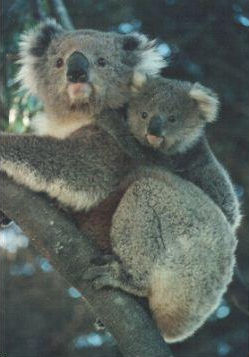 |  |
| Koala & baby | Opossum |
Placental Mammals :
- Young carried in uterus & nourished by placenta
- Gestation periods (time of development within uterus) varies among species
- Adapted for life on land in water, and in air
- Mammal species make up 95 % of all animals
- At least 18 orders exist
Order Insectivora:
- Includes moles, hedgehogs, & shrews
- Small with high metabolic rate
- Found in North America, Europe, & Asia
- Have long, pointed noses to grub for insects & worms
- Teeth adapted to pick up & pierce prey
- Adapted to live on & under ground, in trees, and in water
- Shrews feed above ground & have claws to help sweep invertebrates into their mouths
- Moles live underground, have reduced eyes & no external ears, and have short limbs to dig tunnels
 |  |
| Mole | Shrew |
Order Rodentia:
- Largest mammal order (40% of all species)
- Found everywhere except Antarctica
- Includes squirrels, chipmunks, gophers, rats, mice, & porcupines
- Have two instead of four incisors
- Teeth continue to grow throughout their life
- Feed on hard seeds, twigs, roots, & bark
- Gnawing keeps incisors sharp
- High reproductive capacity
- Guinea pig & capybaras are two rodents found in South America
 |  |
| Chipmunk | Porcupine |
Order Lagomorpha:
- includes rabbits, hares, & pikas
- Found worldwide
- Have a double row of upper incisors & two large front teeth backed up by two smaller teeth
- Continuous growing teeth
- Herbivores
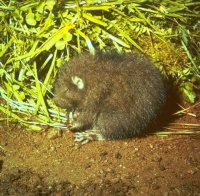 | 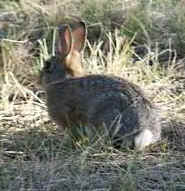 |
| Pika | Hare |
Order Edentata:
- Includes anteaters, armadillos, & sloths
- Found in North, Central, & South America
- Means “without teeth”
- Only anteaters are completely toothless
- Armadillos & sloths have peg-like teeth without enamel
- Have long sticky tongues & claws on powerful front paws to open ant hills& termite nests
- Sloths are herbivores
- Armadillos eat small reptiles, frogs, mollusks, & dead animals
 |  |
| Armadillo | Sloth |
Order Chiroptera:
- Only flying mammals
- Includes bats found everywhere except polar regions
- Front limb is modified into a wing with a skin membrane stretching from the finger bones to the hind limb
- Clawed thumb, extending from top edge of wing, is used for walking, climbing, & grasping
- Most are nocturnal (night active)
- Use echolocation (emission of high frequency sounds that bounce off objects) to navigate and locate food
- Have small eyes & large ears
- Feed mainly on insects
- Tropical bats don’t use echolocation, but have large eyes & keen sense of smell to find fruit to feed on & nectar
Order Cetacea:
- Includes whales, dolphins, & porpoises
- Most inhabit oceans, but some dolphins live in freshwater rivers
- Have a fish shaped body
- Forelimbs modified as flippers
- No hind limbs
- Broad, flat tails to propel through water
- Breathe through a blowhole on top of the head
- Divided into two groups — toothed whales & baleen whales
- Toothed whales:
1. Includes beaked, sperm, beluga, & killer whales; narwhals; dolphins; porpoises
2. Have 1 to more than 100 teeth
3. Prey on fish, squid, seals, & other whales
 |  | 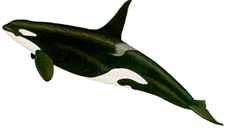 |
| Narwhal | Beluga | Orca |
- Baleen whales:
1. Lack teeth
2. Includes blue, grey, right & humpbacked whales
2. Have baleen or thin plates of fingernail like material that hangs from the roof of the mouth
3. Baleen strain shrimp & other invertebrates from water as food
 |  |
| Blue Whale | Humpbacked Whale |
Order Sirenia:
- Includes manatees & dugongs
- Large herbivores
- Inhabit tropical seas, estuaries, & rivers
- Front limbs modified into flippers
- No hind limbs
- Flattened tail for propulsion
 |  |
| Manatees | Dugongs |
Order Carnivora:
- Found worldwide
- Includes cats, dogs, raccoons, bears, hyenas, & otters
- Meat eaters (carnivores) mainly
- Many feed on both plants & animals (omnivores)
- Have long canine teeth & strong jaws
- Clawed toes for seizing & holding prey
- Keen sense of sight & smell
- Long limbs for running fast
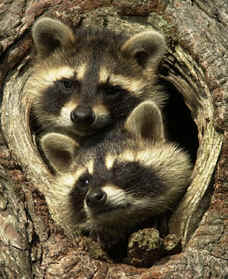 |  |
| Raccoons | Hyena |
Order Pinnipedia:
- Aquatic carnivores
- Includes sea lions, seals, & walruses
- Streamlined bodies adapted for swimming
- Steer & propel through water using broad, flattened tail
- Called pinnipeds
- Return to land to feed & give birth
- Spend much of their time in cold water
- Large land carnivores so this helps maintain endothermy
- Can remain under water for 5 minutes to an hour for some species
Order Artiodactyla:
- Known as ungulates or hoofed mammals
- Have an even number of toes
- Includes deer, elk, bison, moose, sheep, cows, caribou, goats, pigs, & camels
- Herbivores
- Have large flat molars for grinding plants
- Found everywhere except Antarctica
- Cloven or split hooves
- Fast runners (used for defense)
- Have storage chamber called rumen in stomach where bacteria break down cellulose
- Stored food called cud is chewed again & then swallowed to go through digestive system a second time
Order Perissodactyla:
- Odd toed ungulates
- Includes horses, zebras, rhinoceroses, & tapir
- Most are native to Africa & Asia
- Tapirs are found in Central & South America
- Have a large, convoluted caecum or blind sac near the small intestine where bacteria digest cellulose
 |  |
| Caribou (even-toed) | Tapir (odd-toed) |
Order Proboscidea:![]()
- Have a boneless trunk or proboscis
- Includes the African & Asian elephant
- Wooly mammoth is an extinct member of this order
- Largest terrestrial mammal
- Weigh more than 6 tons
- Feed on plants up to 18 hours a day
- Proboscis used to gather leaves from high branches & to suck water without lowering the head
- Modified incisors called tusks help dig for roots & strip bark
- Jagged molars up to 30 cm long grind plants
- Have the longest gestation period (20 months for females & 22 months for males)
- Females can continue to have calves until they are 70 years old
 | 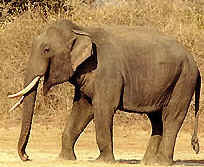 |
| African Elephant | Asian Elephant |
Order Primates:
- Includes 2 main groups — Prosimians & Anthropoids
- Most are omnivores
- Have teeth suitable for a varied diet
- Prosimians include lemurs, tarsiers, & lorises
- Anthropoids include monkeys, apes, & humans
- Anthropoids have a larger brain
- Show more complex behaviors than other animals
- Highly organized social groups
- Gorilla is the largest primate
- Have 2 forward-facing eyes for depth perception
- Have grasping hands & most with grasping feet
- Some have a grasping tail for life in trees
- Live in a variety of habitats
 | 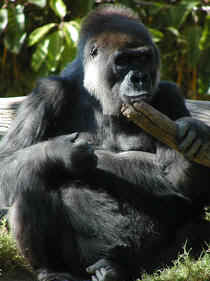 |
| Lemur | Gorilla |
 | Section 3 Review |



